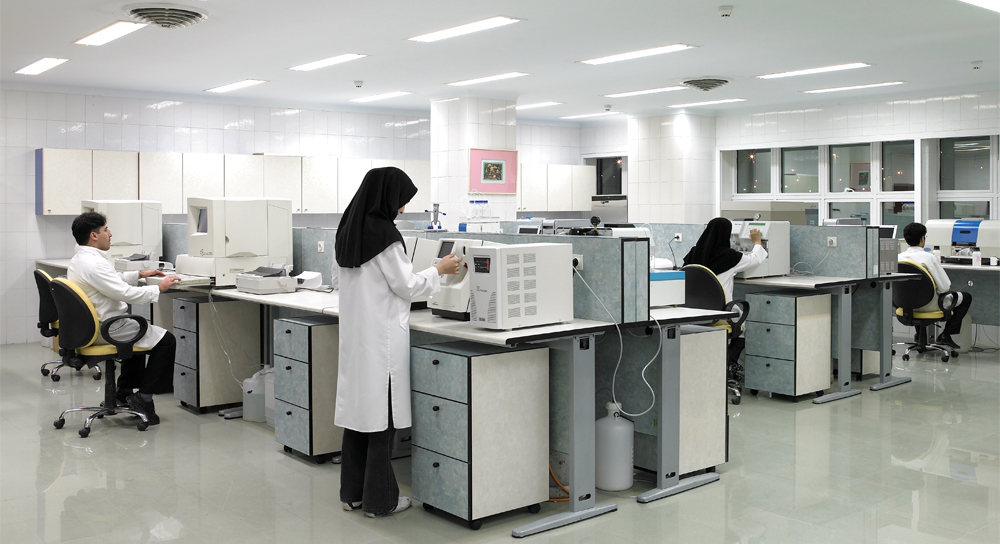On Saturday Iran observed the International Day of Women and Girls in Science along with the rest of the world.
Science and gender equality are both vital for the achievement of internationally-mandated development goals, including the 2030 Agenda for Sustainable Development. Over the past 15 years, the global community has made a lot of effort in inspiring and engaging women and girls in science.
Unfortunately, women and girls continue to be excluded from participating fully in science and technology majors in some societies in the world. In order to achieve full and equal access to and participation in science for women and girls, and further achieve gender equality and the empowerment of women and girls, the United Nations General Assembly declared February 11 as the International Day of Women and Girls in Science to mobilize efforts towards this goal.
In Iran, around 70% of science and engineering students are women. As of 2006, women have accounted for over half of university students and 70% of science and engineering students.
Since 2015, to help increase the number of women as faculty members, Iran’s Ministry of Science, Technology, and Research ordered the Central Committee for Recruitment of University Faculty Members to remove gender bias and recruit on the basis of merit, ISNA reports.
In 2012, according to UNESCO data, over 2 million out of 4 million students in tertiary education in Iran were females, thus marking the fifth largest female enrollment after China, India, the US and Brazil.
‘Female engineers and computer programmers wanted,’ is the call from a new United Nations report that shows women are not averse to graduating with life science degrees, but are still rare in engineering and computer science, especially in developed economies.
Medicine is a field increasingly popular with women. During the last few years the number of Iranian female students attending universities of medical sciences has exceeded the number of males, in particular in the fields of pharmacy and nursing.
According to the National Organization for Educational Testing, this year which ends in March, 1,147 PhD students were accepted to universities of medical sciences, of whom 62% were female and 38% male.
“An analysis of computer science shows a steady decrease in female graduates since 2000 that is particularly marked in high-income countries,” the UN Educational, Scientific and Cultural Organization said in its UNESCO Science Report: Towards 2030, released on Friday.
In her message on the Day, UNESCO Director-General Irina Bokova called for empowering women and girls to learn and research, UN News Center reported.
“We must raise awareness about the work of women scientists by providing equal opportunities for their participation and leadership in a broad spectrum of high-level scientific bodies and events,” Bokova said, calling also for mentoring opportunities for women.
In 2016, UNESCO and the L’Oréal Foundation launched the manifesto For Women in Science, to engage governments and stakeholders in promoting the full participation of girls and women in science.
Offer Unique Opportunities
Science and technology offer unique opportunities for women and girls to overcome a number of the barriers they typically face. Women with skills in science and technological fields can help contribute to vital infrastructure such as water and power supply, and in doing so ease the responsibilities that women and girls carry of providing unpaid care work for the household.
Similarly, Internet and mobile technology can help bridge barriers to education for the 32 million girls who are out of school at the primary level and the 29 million at the lower secondary level, explained UN Women, the United Nations entity on women’s empowerment and gender equality.
Women now account for 53% of world’s bachelor’s and master’s graduates in science and 43% of PhDs, according to the UNESCO report. Since 2000, there has been a steady increase in female graduates in agricultural sciences, likely driven by an emphasis on national food security and the food industry. In research, however, women still lag behind men at 28%.
In Iran, only 16% of all faculty members are women. According to advisor to the science minister for women and family affairs, Elaheh Hejazi, “The gap is mainly due to a male-dominant structure in faculties of higher education,” and “there is a need for gender-sensitive planning, and empowerment projects.”
As the next step on the agenda to bring about gender equity, “we have plans to help increase women’s presence as faculty members in universities and centers of higher education,” Vice President for Women and Family Affairs Shahindokht Molaverdi said at a meeting in Tehran on the eve of the international occasion.
“As a scientific authority in executive and planning affairs as well as knowledge-creation, the Ministry of Science, Research, and Technology must play a bigger role in promoting the role of women in academia and cultural, social, and economic spheres,” Minister of Science Mohammad Farhadi noted. He stressed that research concerning women and their pertinent issues must be given impetus, and that scientific studies are necessary to alleviate the status of women and create a level playing field for their academic activity.
To encourage women and girls to study and work in science, technology, engineering and mathematics (STEM), the UN has organized a number of events around the world.


